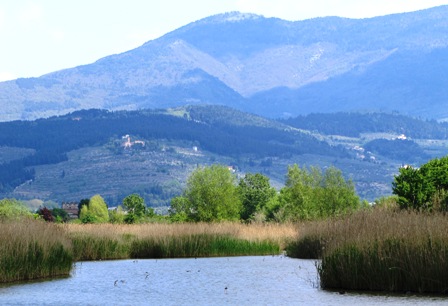Since one of the articles listed in yesterday’s post mentioned the effect of curcumin on cholesterol, I thought this brand new study would be the perfect segue: http://goo.gl/bg3XE.
The full text is online, but here is the gist. A group of 16 healthy volunteers took a total of one gram of curcumin/day for 15 days. At the end of that period, tests revealed that their liver and kidney functions had improved, in some cases quite significantly, and the same was true of their cholesterol and blood glucose levels. When we consider that they were taking only ONE gram a day and that the trial lasted only for 15 days, these results are rather extraordinary…
I was at first puzzled by a statement that can be found on page 1 of the Introduction. According to the authors, it would be a problem to take eight grams of Curcuma longa every day particularly because of the taste. Ehhh? The taste of curcumin has never bothered me, not even when I was swallowing eight grams of C3 Complex curcumin powder mixed with a variety of substances, from heated coconut milk to 100% chocolate…not even when I tried a spoonful of curcumin powder straight from the bottle, just to see what it would taste like. And I think we all would all agree that curcumin doesn’t taste like anything when it is sealed inside a capsule that gets swallowed instantly…A baffling statement…that is, until I re-read it and realized that the authors were referring to a Swedish study (see: http://goo.gl/4wIru), which observes that one cannot possibly swallow six grams/day of TURMERIC (the spice, not the active ingredient) because of its taste. Ah, right…Curcuma longa, not curcumin! Duuuh, Margaret. Mystery solved… 🙂
As for its poor bioavailability, I would like to repeat (from memory) what Prof. Aggarwal said during an interview (which, btw, I link to from my blog; just scroll down my Pages on the right to find it), which makes total sense: curcumin is not a drug, so it is silly to think it will behave like a drug. Huge amounts of curcumin will never show up in the bloodstream, in other words. But, he adds, curcumin gets absorbed by some of our tissues within minutes after being ingested…And that is important.
And that is precisely why I found this study particularly intriguing. The amount of curcumin given to the healthy volunteers was, as we have seen, negligible compared to the amounts that most of us take…Yet even that itsy bit had a significant effect on many important markers…markers that are important for us myeloma folks, too—haemoglobin and creatinine, e.g. And in a very short period of time, too.
Yesterday I mentioned what curcumin has done to my own inherited/high cholesterol, so I don’t need to repeat all that again. However, I didn’t tell you that my Dad’s high cholesterol has also gone down quite a bit since he began taking curcumin (my parents, who are in their early 80s and healthy, take about 4 grams of curcumin/day, as does Stefano…for preventive purposes, of course).
Our (=my Dad’s and my own) experience is confirmed by the study results: 60% of the volunteers had a decrease in their total cholesterol levels. Also, The soluble curcumin also significantly lowered serum triglycerides and LDL cholesterol in 35% and 68% of subjects respectively, compared to the values recorded on first day. […] The reduction in LDL, = “bad” cholesterol, was of particular interest to me, since the same has happened to me, too. And the volunteers’ “good” cholesterol (HDL) was not affected, which also mirrors my own experience. If anything, the HDL went up…which is good, of course.
The volunteers’ liver markers also improved. Two thirds of them experienced a decrease in bilirubin, and most of them had a decrease in their urea and creatinine levels, too. Specifically, a whopping 87% saw their creatinine levels go down…wowsies! My creatinine levels have gone down, too. In my pre-curcumin period, they hovered around 0.9 mg/dL; on curcumin, they went down to 0.7. Not sure how “whopping” that is, but I am always glad to see my markers go in the right direction…
Interesting result: there was no change in the volunteers’ lymphocytes and neutrophils, which is good news, but there was a significant increase in the haemoglobin level of the healthy volunteers. Now, that particular sentence made me go check my haemoglobin levels…In the pre-curcumin period, my Hb was 13.20 g/dL. It is now 13.4. Not much of an increase, eh…But it is also true that I have changed labs, which could make a difference…
Discussion part. Let’s see…To recap, the ingestion of just a small amount of curcumin in a period of 15 days improved the blood chemistry, glucose and cholesterol levels of 16 healthy folks.
Ah, here is a relevant titbit: the reduction in these volunteers’ blood glucose was staggering. 75% of them experienced a significant decrease. I checked my test results and, yes, my blood glucose levels have diminished somewhat, too. Unfortunately, my liver markers and bilirubin were not tested in the pre-curcumin period, so I have no idea if they have improved or not. I did have them tested in 2008, and they were all way within the normal range. That info is not useful in terms of this study, though…
One thing that might be useful to some of you, even though it has nothing whatsoever to do with this study!, is that fact that I have noticed a significant improvement in my memory. I have written about this in previous posts, too, but I would like to mention it again now. Basically, before taking curcumin, I used to forget stuff that I now remember with ease. Hmmm…I have tried to come up with a good anecdote, but my mind has given me only a rather silly one. Since, however, I am sure something similar has happened to all of us, here it is:
Let’s say you need to go upstairs to get something but by the time you get to the top of the stairs you have become distracted by other thoughts and have forgotten why you went upstairs in the first place. That used to happen to me quite a lot in the pre-curcumin period, but it is definitely a thing of the past. In other words, I always remember WHY I go upstairs. 🙂 Hmmm, I am sure that if I put my mind to it I could come up with a better example, but today is a busy day (again), so I don’t have much time…
Oh…dear me, speaking of which…is that the time? I have to rush off now. Parting words: if you can’t or don’t want to read the whole study (it’s only a few pages long and not too complicated, though), do have a look at the concluding remarks. I loved this sentence in particular: No pathological, behavioral abnormalities or lethality was observed. LETHALITY???
Hehe, that gave me a good chuckle today… 🙂








